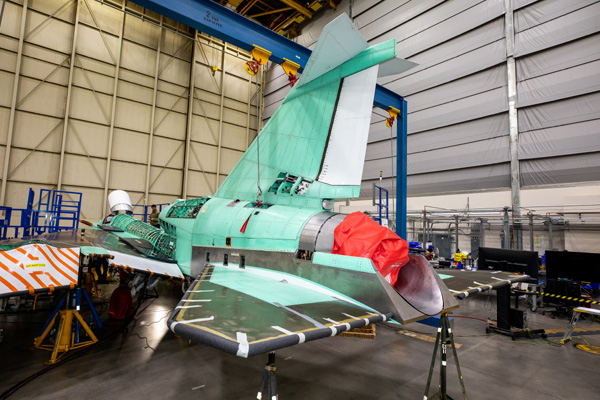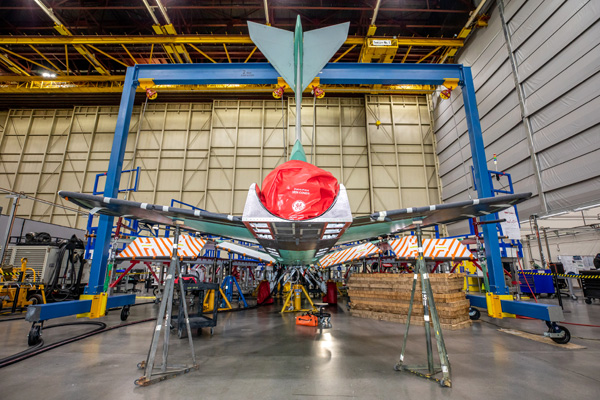 NASA GSFC
NASA’s TESS Celebrates Fifth Year Scanning the Sky for New Worlds (News Release)
NASA GSFC
NASA’s TESS Celebrates Fifth Year Scanning the Sky for New Worlds (News Release)
Now in its fifth year in space, NASA’s
TESS (Transiting Exoplanet Survey Satellite) remains a rousing success. TESS’s cameras have mapped more than 93% of the entire sky, discovered 329 new worlds and thousands more candidates, and provided new insights into a wide array of cosmic phenomena, from stellar pulsations and exploding stars to supermassive black holes.
Using its four cameras, TESS monitors large swaths of the sky called sectors for about a month at a time. Each sector measures 24 by 96 degrees, about as wide as a person’s hand at arm’s length and stretching from the horizon to the zenith.
The cameras capture a total of 192 million pixels in each full-frame image. During its primary mission, TESS captured one of these images every 30 minutes, but this torrent of data has increased with time.
The cameras now record each sector every 200 seconds.
“The volume of high-quality TESS data now available is quite impressive,” said Knicole Colón, the mission’s project scientist at NASA's Goddard Space Flight Center in Greenbelt, Maryland. “We have more than 251 terabytes just for one of the main data products, called full-frame images. That’s the equivalent of streaming 167,000 movies in full HD.”
“TESS extracts parts of each full-frame image to make cutouts around specific cosmic objects – more than 467,000 of them at the moment – and together they create a detailed record of changing brightness for each one,” said Christina Hedges, lead for the TESS General Investigator Office and a research scientist at both the University of Maryland, Baltimore County and Goddard. “We use these files to produce light curves, a product that graphically shows how a source’s brightness alters over time.”
To find exoplanets, or worlds beyond our solar system, TESS looks for the telltale dimming of a star caused when an orbiting planet passes in front of it. But stars also change brightness for other reasons: exploding as supernovae, erupting in sudden flares, dark star spots on their rotating surfaces and even slight changes due to oscillations driven by internal sound waves.
The rapid, regular observations from TESS enable more detailed study of these phenomena.
Some stars give TESS a trifecta of brightness-changing behavior. One example is AU Microscopii, thought to be about 25 million years-old – a rowdy youngster less than 1% the age of our Sun.
Spotted regions on AU Mic’s surface grow and shrink, and the star’s rotation carries them into and out of sight. The stormy star also erupts with frequent flares.
With all this going on, TESS, with the help of NASA’s now-retired
Spitzer Space Telescope, discovered a planet about four times Earth’s size orbiting the star every 8.5 days. Then, in 2022, scientists announced that TESS data revealed the presence of another, smaller world, one almost three times Earth’s size and orbiting every 18.9 days.
These discoveries have made the system a touchstone for understanding how stars and planets form and evolve.
Here are a few more of the mission’s greatest hits:
- TESS has observed hundreds of supernovae and thousands of other candidate transient, or short-lived, events so far.
- TOI 700 d was the first planet TESS found that orbits within its star’s habitable zone. That’s the range of orbital distances where liquid water potentially could exist on the planet’s surface.
In January, astronomers announced this Earth-sized world was joined by another, TOI 700 e, that also orbits in the star’s habitable or “Goldilocks” zone.
- The active galaxy ESO 253-3 hosts a 78-million-solar-mass black hole that flares up every 114 days, the first supermassive black hole shown to flare regularly. To understand why, astronomers combined ground-based observations of the flares with data from TESS, NASA’s
Swift and
NuSTAR telescopes, and the
XMM-Newton satellite operated by ESA
(the European Space Agency).
The most likely answer, they say, is that a giant star skims close enough to the monster black hole once each orbit that the black hole’s gravity strips away some stellar gas. This material falls inward, creating a flare when it strikes the vast disk of gas surrounding the black hole.
- TESS discovered a trio of hot worlds larger than Earth orbiting a much younger version of our Sun called TOI 451, located about 400 light-years away. The system was found in a newly-discovered “river” of stars called the Pisces-Eridanus stream, which stretches across one-third of the sky.
TESS showed that many of the stars revealed had star spots and rotated rapidly – clear evidence the stream was only 120 million years-old, or one-eighth the age of previous estimates.
New discoveries are waiting to be made within the huge volume of data TESS has already captured. This is a library of observations astronomers will explore for years, but there’s much more to come.
“We’re celebrating TESS’s fifth anniversary at work – and wishing it many happy returns!” Colón said.
TESS is a NASA Astrophysics Explorer mission led and operated by MIT in Cambridge, Massachusetts, and managed by NASA's Goddard Space Flight Center. Additional partners include Northrop Grumman, based in Falls Church, Virginia; NASA’s Ames Research Center in California’s Silicon Valley; the Harvard-Smithsonian Center for Astrophysics in Cambridge, Massachusetts; MIT’s Lincoln Laboratory; and the Space Telescope Science Institute in Baltimore.
More than a dozen universities, research institutes and observatories worldwide are participants in the mission.
Source: NASA.Gov
****
 NASA
NASA




































